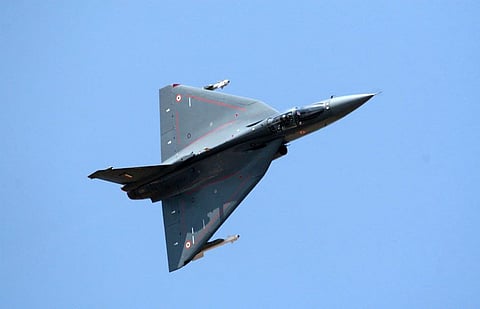
- Home
- न्यूजग्राम
- NewsGram USA
- India
- World
- Politics
- Entertainment
- Culture
- Lifestyle
- Economy
- Sports
- Sp. Coverage
- Misc.
- NewsGram Exclusive
- Jobs / Internships

Light Combat Aircraft (LCA) of the Hindustan Aeronautics Limited (HAL) is the first indigenously Built Fighter Aircraft By India of International Standards. The dream of having a squadron of the indigenous Tejas Light Combat Aircraft has been realized, after years of delay. In a ceremony in Bengaluru, two LCA aircraft was been inducted into the IAF squadron, known as the 'Flying Daggers 45'.
on 4th January 2001, the light combat aircraft made its first flight. Wikimedia Commons
For first two years, the LCA squadron will be based in Bengaluru, after which it will move to Sulur in Tamil Nadu.
The Air Force has said that the aircraft will feature in the force's combat plan next year and it might be deployed in forward bases as well. The plans are to acquire over 80 aircraft with better specifications, known as Tejas 1A in the future.
Take a look at some of the amazing facts related to the pride of our nation, Tejas.
To assist the development of the navy variants of Tejas, a shore-based testing facility was created in Goa. Wikimedia Commons
Tejas body structure is composed of 42% carbon fibre composites, 43% aluminium alloy and the remainder titanium alloy. Wikimedia Commons
